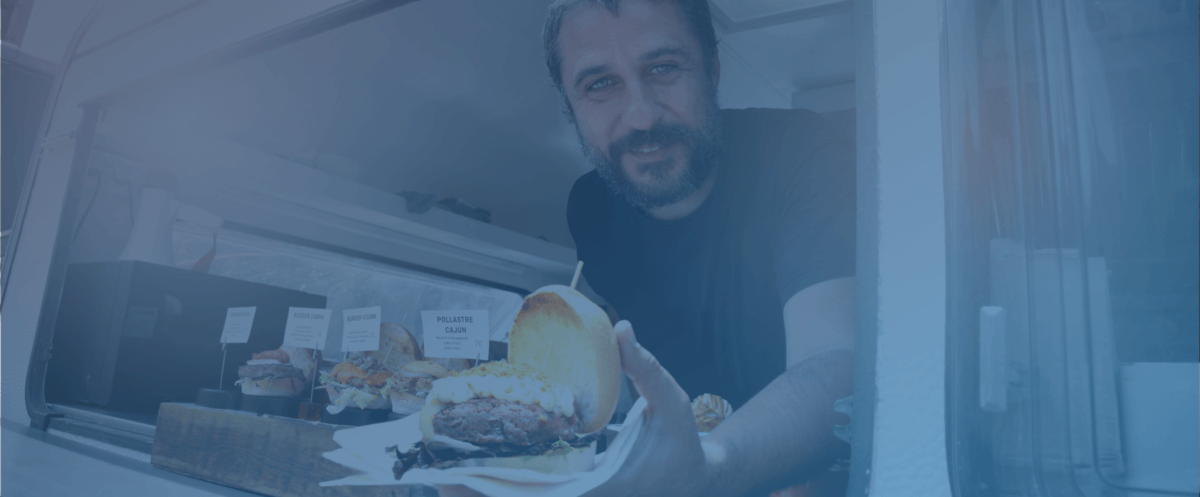There’s nothing worse than throwing food away, whether you feel it in your wallet or in the deeply uncomfortable sensation that accompanies preventable waste, it just never sits well. Each year, 119 billion pounds of food is wasted in the United States, and about 61% of food waste is commercial. There isn’t one surefire way to guarantee your inventory doesn’t spoil before it’s used or extra portions aren’t thrown out, but by using a combination of the following practices you can reduce waste, save costs, and increase your profit margin.
Customize Your Menu with Portion Sizes
Rethink portion sizes or even offer up different sizes on your menu: ‘half portion”, “enough for 2 people”, or “perfect for sharing”. This gives your customers options to order as well as keeping portion control to a minimum. Find out what other menu items that are likely to have leftovers by talking to service staff and gathering feedback directly from the customer.
Food Waste Audits
Create a food waste tracker that can help you find out where your waste is coming from. This can be done by using a POS system or a food waste tracker that allows you to account for all of your front and back-of-house waste. By including the amount, how it was used and wasted, the date and time, etc, you can be on track to keep your inventory costs low.
Buying Too Much Fresh Produce
Fresh is best when it comes to flavor, but overbuying can mean dumping at the end of the day. An accurate average of how much fresh food you need for the day is essential to not throwing away food. A good operations software package will see that you don’t order too much or too little.
Calculate Inventory Days on Hand
Familiarize yourself with your calculation of inventory days on hand (DOH) to use it to control what and how much of each item you are bringing in from vendors and preparing for meals. DOH refers to how long an item has been in storage in your inventory and can be used to find the average number of days before prepping. DOH can be tracked with POS systems, keeping it easy on management.
Multi-use Menu Items
Have ingredients that can be used in multiple recipes? Opt for finding ways to use ingredients in dishes that will enable you to save money when you buy in bulk. This helps reduce your inventory’s ratio and cut down on food waste.
Doggy Bags
If customers still have a sizeable portion of food on their plate, have the option to offer them a doggy bag. Offering reusable containers or even cardboard takeout boxes allows guests to be able to enjoy their meal later on at home and keeps food on plates and out of the trashcan.
Inspect the Food
Don’t be afraid to make your delivery driver wait while you/your staff performs a thorough inspection of the delivered product. Your vendors may be reputable, but at the end of the day, you’re the expert on what you can and will serve. The obvious checks are expiration dates and visible damage or bruising. The less obvious is the ripeness of your produce and checking whether perishables have been held at the correct temperature for the entirety of their journey. If your order of tomatoes looks perfectly ripe for today, but won’t last until your next delivery, send them back. If the cardboard box containing your meat for the week looks like it could write a dissertation on climate change, send it back. When it comes to inspecting your inventory deliveries, your best judgment is your best friend.
Weekly Specials
Repurpose unused food before it spoils by incorporating your inventory into weekly specials or promotions. By promoting menu items with these ingredients, you can maximize menu items and also reduce your waste.
Track Popularity
Menu management can help you reduce waste as well. By keeping track of how many menu items are being ordered and ingredients being used, you can maximize recipes or even remove less popular menu items.
Store Produce Correctly
When your inventory is delivered, it’s packaged in a way that keeps it safe on the long trek to your restaurant, but that’s not necessarily the best to retain its freshness and quality. Temperature, containers, and designated areas are all things to monitor when the produce crosses your path. Educating your staff on what the best temperature for various types of meat is, where you should store the veggies, and what food box or packaging will suit which ingredients are all money-saving must-dos.
Storage Temperature Checks
Having your fridge and freezer inspected regularly can prolong the shelf life of your food, as well as it’s quality. To reduce temperature variance in your coolers, hot items should be pre-cooled before being stored. You can use a cooling paddle, ice bath, or chill blaster. This way the food will stay fresher for longer.
Label Everything
Every item that passes through your doors should be labeled immediately with the following criteria:
- What it is
- The date it was received
- It’s potential expiration date
The FIFO (first in first out) rule is an oldie but a goodie. There is no better system for pulling ingredients.
Donate
If you find that your restaurant has extra waste and would want it to be utilized rather than just disposed of, consider donating your leftovers to charity or a food bank. Some restaurants can even take advantage of tax deductions for food donations, equal to 10% of the net income of your restaurant.
Be Creative or Give to Employees
When you see that a certain food is nearing its use-by date, and it isn’t used much on your menu, create a special and have your chef conjure up a lip-smacking delight for that night. If your restaurant has many leftovers by closing, ask employees if they would like to take home items or orders for leftovers, as long as they are safe to eat. A free meal goes a long way and can even increase the morale of the work environment — everyone loves to chow down!
Compost
Take your organic waste and put it into compost. Waste will then return to the environment, creating a natural turnover for nutrient-rich soil, rather than ending up in a landfill.
Let’s Not Waste Any More Time
Although you might not be able to save every single bit of waste, with these tips you can cut down on inventory waste that can increase your savings. Decision Logic can help you keep track of what goes from kitchen to plate by powering up performance, giving restaurant executives an edge thanks to streamlined workflows, straightforward inventory management, and unprecedented control over data. Schedule a demo and see for yourself how Decision Logic can be the difference you need to improve your waste management performance.




